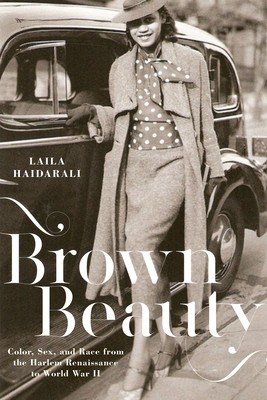
- We will send in 10–14 business days.
- Author: Laila Haidarali
- Publisher: New York University Press
- Year: 2018
- Pages: 368
- ISBN-10: 1479802085
- ISBN-13: 9781479802081
- Format: 15.2 x 22.6 x 3.1 cm, softcover
- Language: English
- SAVE -10% with code: EXTRA
Reviews
Description
Examines how the media influenced ideas of race and beauty among African American women from the Harlem Renaissance to World War II.
Between the Harlem Renaissance and the end of World War II, a complicated discourse emerged surrounding considerations of appearance of African American women and expressions of race, class, and status. Brown Beauty considers how the media created a beauty ideal for these women, emphasizing different representations and expressions of brown skin.
EXTRA 10 % discount with code: EXTRA
The promotion ends in 19d.22:23:25
The discount code is valid when purchasing from 10 €. Discounts do not stack.
- Author: Laila Haidarali
- Publisher: New York University Press
- Year: 2018
- Pages: 368
- ISBN-10: 1479802085
- ISBN-13: 9781479802081
- Format: 15.2 x 22.6 x 3.1 cm, softcover
- Language: English English
Examines how the media influenced ideas of race and beauty among African American women from the Harlem Renaissance to World War II.
Between the Harlem Renaissance and the end of World War II, a complicated discourse emerged surrounding considerations of appearance of African American women and expressions of race, class, and status. Brown Beauty considers how the media created a beauty ideal for these women, emphasizing different representations and expressions of brown skin.


Reviews